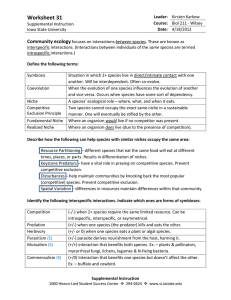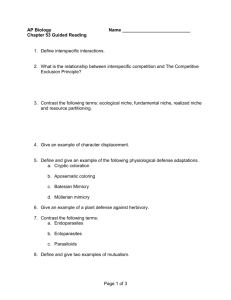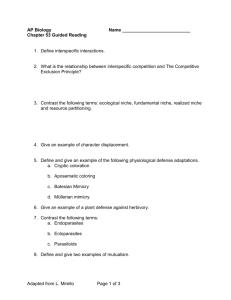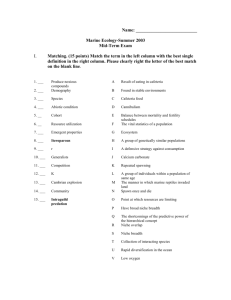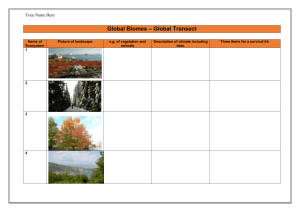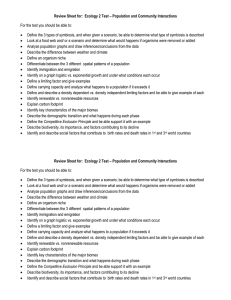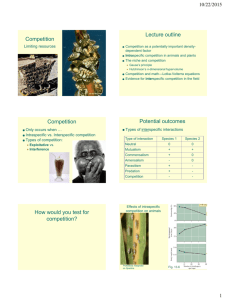AP Biology Ecology Review
advertisement
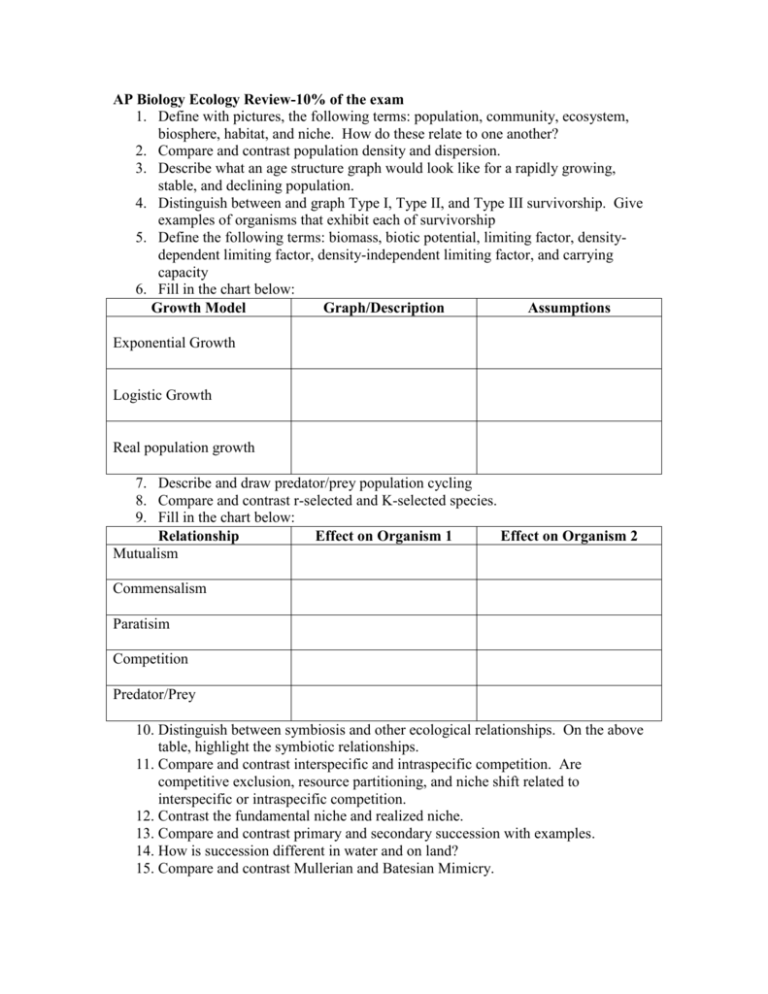
AP Biology Ecology Review-10% of the exam 1. Define with pictures, the following terms: population, community, ecosystem, biosphere, habitat, and niche. How do these relate to one another? 2. Compare and contrast population density and dispersion. 3. Describe what an age structure graph would look like for a rapidly growing, stable, and declining population. 4. Distinguish between and graph Type I, Type II, and Type III survivorship. Give examples of organisms that exhibit each of survivorship 5. Define the following terms: biomass, biotic potential, limiting factor, densitydependent limiting factor, density-independent limiting factor, and carrying capacity 6. Fill in the chart below: Growth Model Graph/Description Assumptions Exponential Growth Logistic Growth Real population growth 7. Describe and draw predator/prey population cycling 8. Compare and contrast r-selected and K-selected species. 9. Fill in the chart below: Relationship Effect on Organism 1 Effect on Organism 2 Mutualism Commensalism Paratisim Competition Predator/Prey 10. Distinguish between symbiosis and other ecological relationships. On the above table, highlight the symbiotic relationships. 11. Compare and contrast interspecific and intraspecific competition. Are competitive exclusion, resource partitioning, and niche shift related to interspecific or intraspecific competition. 12. Contrast the fundamental niche and realized niche. 13. Compare and contrast primary and secondary succession with examples. 14. How is succession different in water and on land? 15. Compare and contrast Mullerian and Batesian Mimicry. 16. How do camouflage, secondary compounds, warning coloration, mimicry, and plants and pollinators relate to coevolution. 17. Draw a globe and demonstrate where you’d find each of the following biomes: tropical rain forest, tropicall grassland (savanna), temperate grassland (prarie), temperate deciduous forest, taiga, tundra. Why are deserts different from these biomes? 18. What happens to the biodiversity and biomass of each biome as you move from poles to the equator? What happens to the length of the growing season? Are these related? Why or why not? 19. Contrast marine biomes and freshwater biomes. 20. Draw each of the following cycles: Hydrologic (water), Carbon, Nitrogen, Phosphorus. Which cycles are primarily bioticallly driven, and which are abiotically driven? 21. Using the following terms: autotroph, heterotroph, carnivore, herbivore, omnivore, decomposer (detritovore); draw and describe a food chain. How is this different from a food web? 22. Why are food chains rarely more than 5 trophic-levels long? How does this relate to the ecological pyramids of energy, biomass, and numbers? 23. Describe how humans have impacted the following (for both negative and positive): a. Climate change (greenhouse effect) b. Ozone depletion c. Acid Rain d. Desertification e. Deforestation f. Pollution (include eutrophication and biological magnification) g. Reduction of biodiversity
